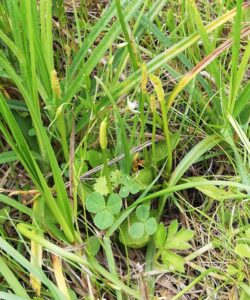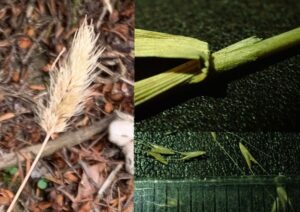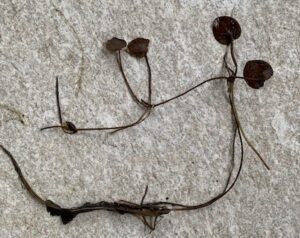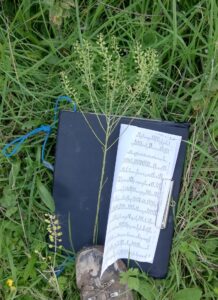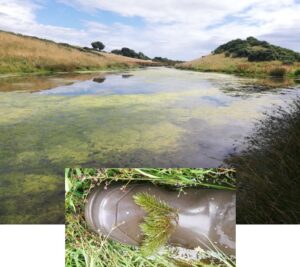2023 County Report for Kincardineshire
David Elston
The most significant event of the year was the death of senior co-recorder David Welch. An obituary has been written and will appear in BSBI News early in 2024.
I led a Wildflower Society walk at St Cyrus NNR on July 4th (main photo) as part of a 3-day meeting organised by Lyn Jones. Most attendees were from the south of England, so were pleased to see common northern species such as Ligusticum scoticum (Scots Lovage) and Rosa mollis (Soft Downy-rose) as well as some of the scarcer plants for which the site is renowned including Dianthus deltoides (Maiden Pink) and Astragalus glycyphyllos (Wild Liquorice).
Recording has concentrated on tetrads with few previous records, primarily in lowland arable areas. Combined with 2022’s focus on lowland areas dominated by arable land, several species once considered scarce in Kincardineshire have been found to be quite widespread, including Lamium hybridum (Cut-leaved Dead-nettle) in arable margins and Carex hirta (Hairy Sedge) in wet grassland.
An urban flora recording visit to Inverbervie led to discoveries of Veronica agrestis (Green Field-Speedwell) in the cemetery and outwith the settlement Salix phylicifolia (Tea-leaved willow) new to the catchment of the Bervie Water.
Visits to edge tetrads primarily in South Aberdeenshire have proved surprisingly productive. In particular, ditches in wet heath close to the former Loch of Park were found to contain Eleogiton fluitans (Floating Rush), Utricularia minor (Lesser Bladderwort) and Eleocharis multicaulis (Many-stemmed Spike-rush).
There are now fewer than 10 tetrads without respectable species lists, and these will be covered in 2024.
A selection of the most significant finds in Kincardineshire during 2023 is given below.

